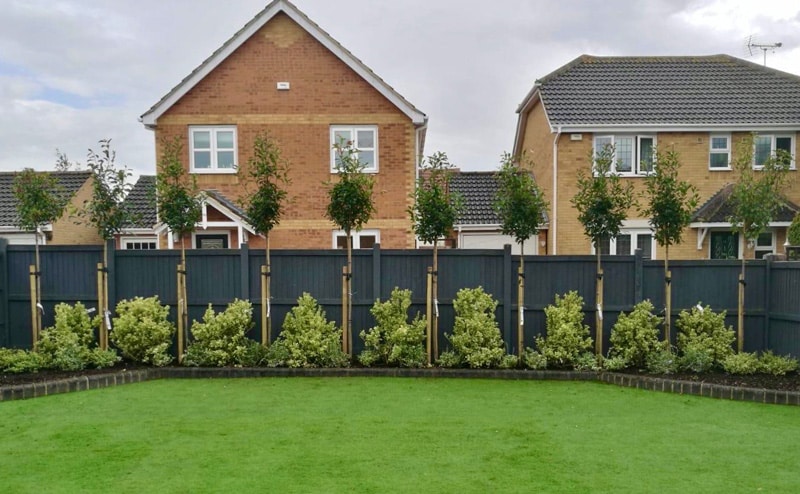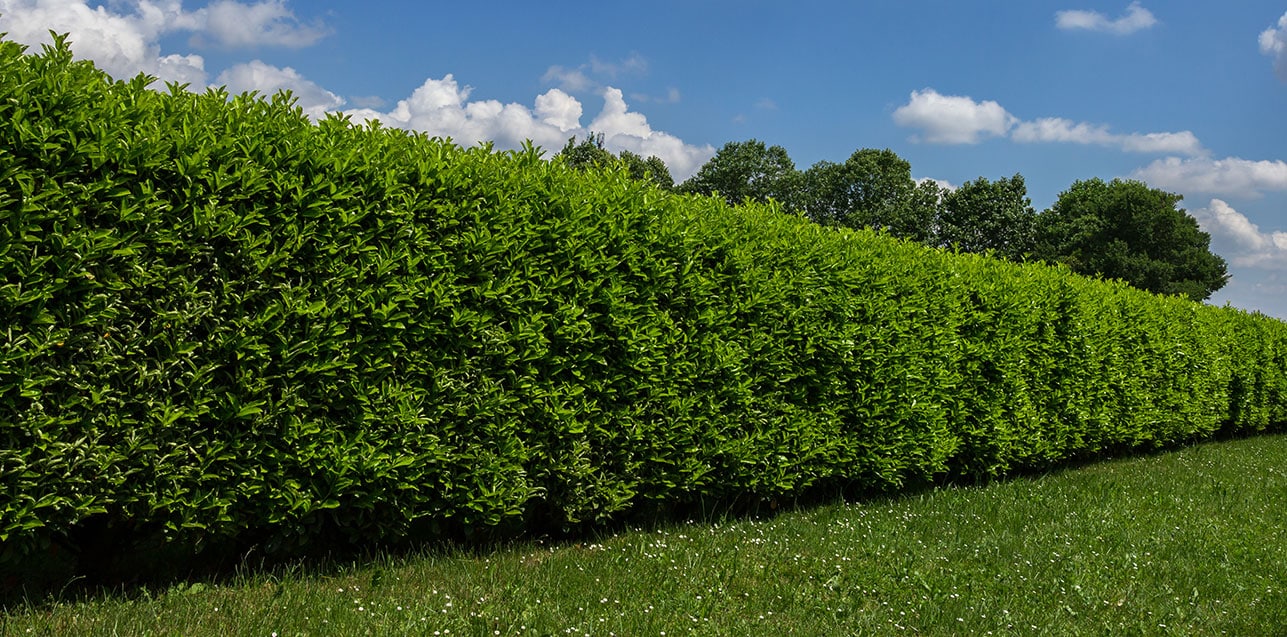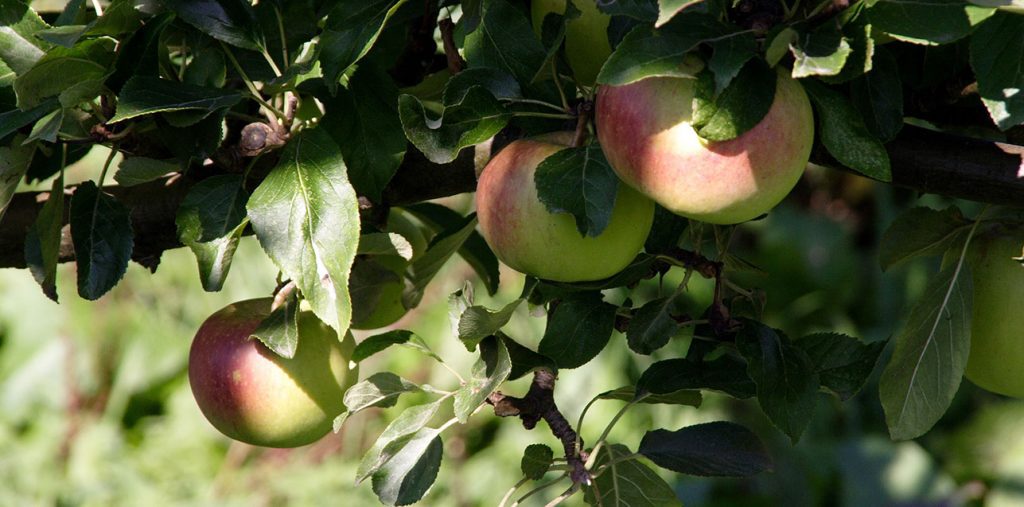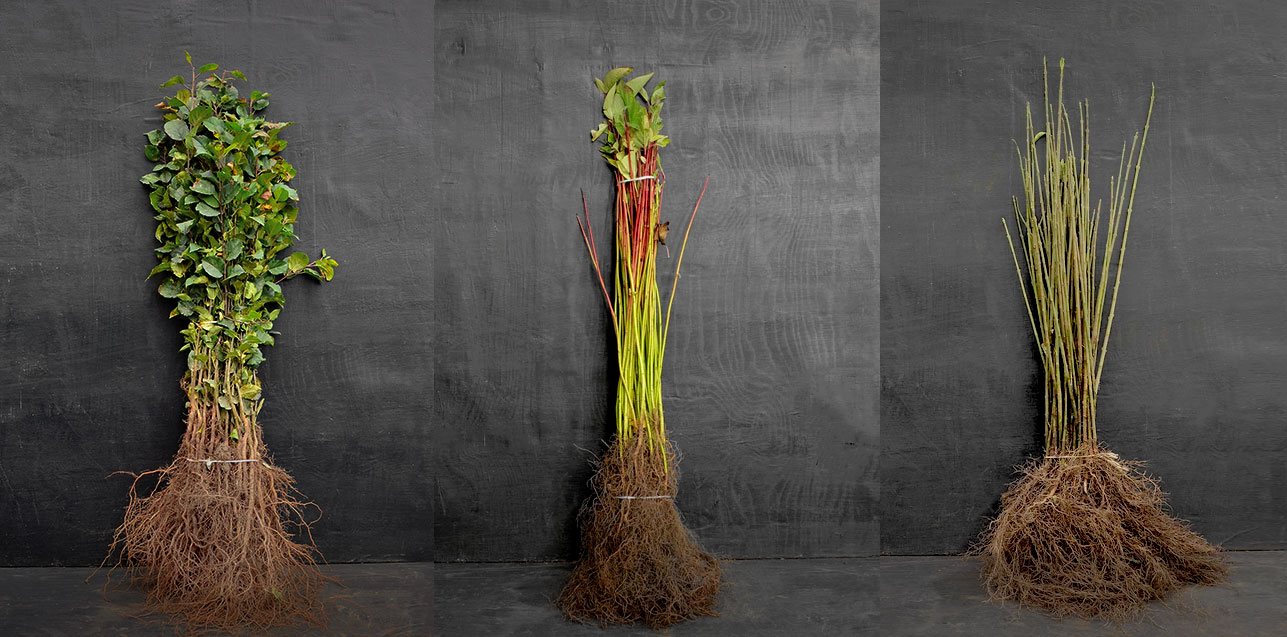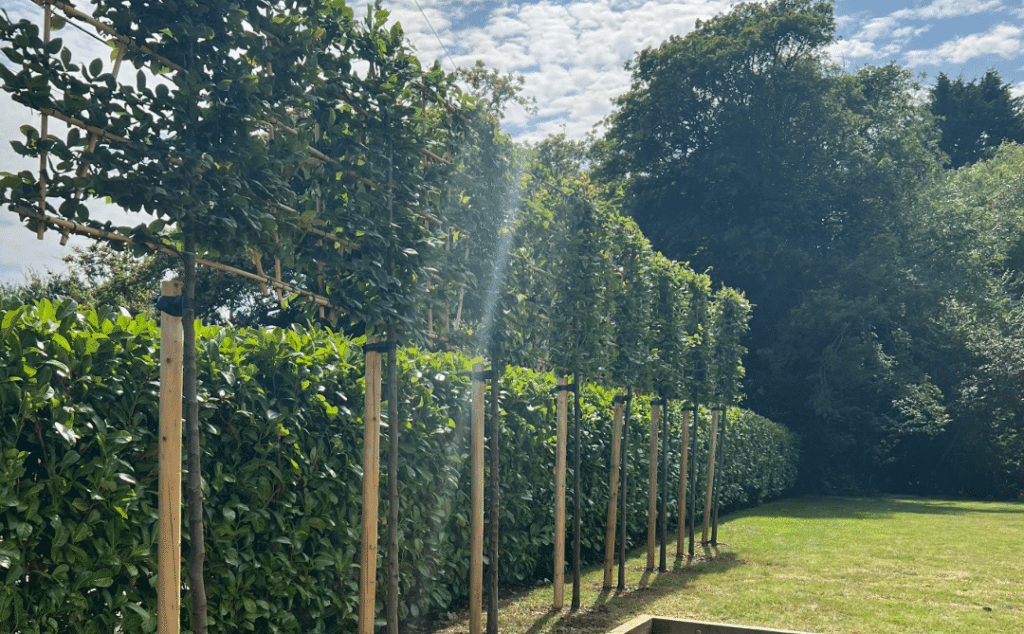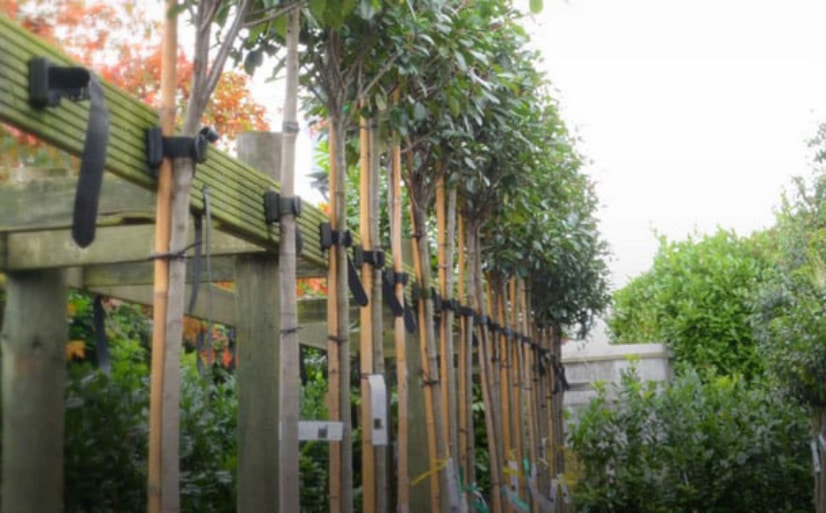Navigating the terminology used to describe trees and plants can be confusing, especially when you’re trying to determine exactly what you need in terms of size, type, or species. If you’ve ever asked, “what is a container grown tree, espallier or rootball?” our tree terminology guide is here to help. Here we’ve provided clear definitions of the most commonly used terms to make your selection process easier!
You may also have noticed that plants are often identified by their Latin names (which sounds complete gobeldy gook to most people). We use these because they allow us to accurately identify and label each specific plant variety. To make things easier for you, we’ve included both the common name and the Latin name for every plant listed on our website e.g Oak for Quercus robur and Cherry for Prunus species.
What is a Container Grown tree?
Container-grown trees are grown in pots or planter bags, either from a young age or after being lifted from a nursery field. Although this method can be more expensive, it allows for year-round planting. These trees are also typically lighter and easier to handle than rootballed trees.
What is a Rootballed tree?
Rootballed trees are field-grown trees lifted with a ball of soil to protect their roots. Rootballed hedging offers a cost-effective method for establishing an instant hedge. Please note that this method is only feasible during the dormant season, which runs from November to March (see our rootballing machine in action).
What is a Bare Root plant?
Bare Root plants are lifted from the field and sold without soil around their roots. As they are supplied without soil or containers, it is by far the most economic method of production. Please note that these plants can only be lifted during their dormancy period, typically from November to March.
Most forms of small hedging is supplied bareroot, but the suitability of planting large bare root plants depends on species and height. For example, Oak trees over 1.5m tall are unlikely to survive bareroot planting, but Wild Cherry at 3-4m tall is perfectly planted as bareroot.
What is a Standard Tree?
A Standard tree is a tree with a clear stem of 1.8 to 2m, topped with a well-formed head. They typically have a girth of 8-10 cm and a height of around 8-10 feet, though this serves as a general guideline.
Standard trees are a frequently requested size in the tree industry. It’s important to note that terms like standard, half standard, and espalier relate to the specific form and shape of the tree.
Half Standard Trees
A half standard tree usually has a 1.2m clear stem with a shaped head. Ilex, Ligustrum, and Photinia are the most popular half standard trees on the market.
Quarter Standard Trees
Quarter standard trees usually have a clear stem of around 60cm with a ball or mop head of foliage on top. They are perfect for gifts or for areas where space is extremely limited.
Heavy Standard Tree or Extra Heavy Standard Tree
Heavy standard trees have a girth of 12-14cm, and extra heavy standard trees have a girth of 14-16cm. These larger sizes are an excellent choice when a more established look is desired for an area. In fact, even larger trees are successfully used in public spaces to prevent vandalism! It’s important to note that these bigger trees require larger delivery vehicles and lifting equipment for unloading at their final location. They are particularly popular with our trade customers.
Pleached Trees
Pleached trees have a 1.8-2m clear stem and a head trained onto a flat frame (typically 1.5 x 1.5m). Typically used for privacy above walls or fences, we stock species like Photinia, Laurel and Hornbeam in pleached form.
Espalier Tree
An espalier tree is a tree with lateral branches from the base to the top of the tree. These are trained onto a flat frame, it is a popular method for training fruit trees against flat walls.
Our nursery staff can advise you on tree selection, size, and transplantation. Please contact our sales office if you are still having difficulty with any tree terminology!

